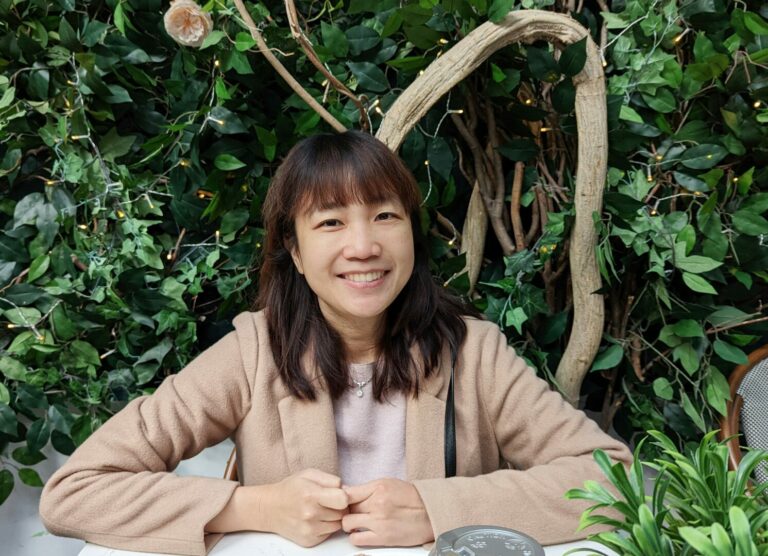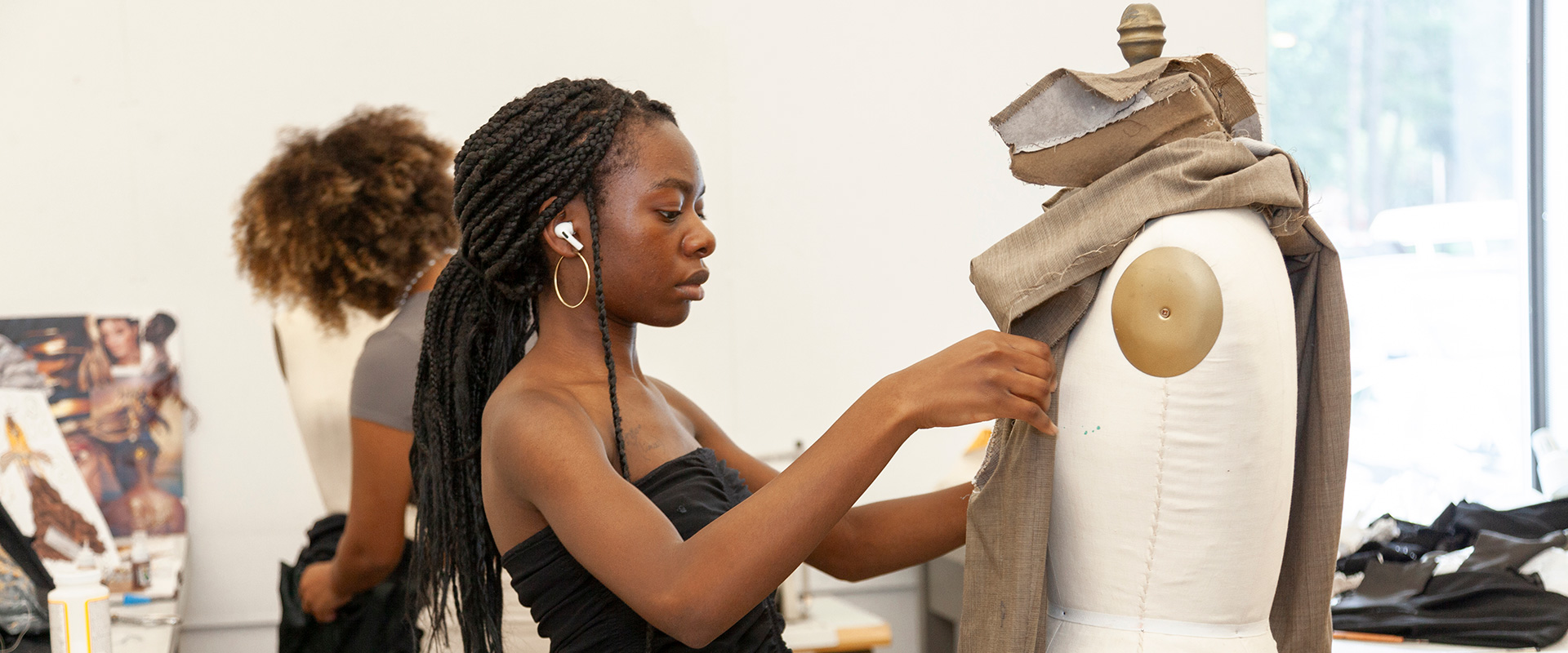We were lucky to catch up with Jiahui Yu recently and have shared our conversation below.
Jiahui, so excited to have you with us today. So much we can chat about, but one of the questions we are most interested in is how you have managed to keep your creativity alive.
I keep my creativity alive by staying curious, exploring different disciplines, and constantly challenging my ideas. Inspiration can come from anywhere—books, films, conversations, or even everyday interactions. I also actively draw from psychology, technology, and gaming, which help me rethink user experience and design in new ways.
A great example is my project Redream, which I worked on for over a year, continuously iterating on both its concept and medium. Initially, it started as an abstract idea about how surrealism and AI could be used for emotional expression, inspired by Freud’s dream theory. However, through multiple iterations and testing, the project evolved significantly. I experimented with different forms—visual storytelling, interactive experiences, and AI-generated dreamscapes—each version refining the way users could engage with and personalize their dreams.
This experience reinforced my belief that creativity isn’t just about having new ideas, but about refining and evolving them. The best ideas don’t emerge fully formed; they require experimentation, feedback, and adaptation. Every iteration of Redream brought new insights, helping me shape an experience that was not only visually immersive but also deeply personal and emotionally resonant.
Ultimately, reflection and iteration are what push creativity forward. By continuously questioning my own work, being open to change, and embracing new possibilities, I ensure that my creative process remains dynamic and ever-evolving.

Great, so let’s take a few minutes and cover your story. What should folks know about you and what you do?
I’m a UX designer passionate about interaction design, human-centered experiences, and the intersection of technology, psychology, and storytelling. Over the years, I’ve worked across various industries, including healthcare, e-commerce, and enterprise platforms, always aiming to create intuitive, functional, and emotionally engaging designs.
One of my most recognized projects is Mindmender, an award-winning digital mental health solution designed to make psychological support more accessible and engaging. It leverages AI-driven emotion recognition, interactive storytelling, and personalized recommendations to help users reflect on their emotions in a non-intimidating way. Mindmender has been honored with TITAN, NY Product, Vega, and Muse Design Awards, validating its impact in merging technology with emotional well-being.
Another meaningful project is Redream, an exploration of AI, surrealism, and emotional expression. Inspired by Freud’s dream theory, it allows users to generate and personalize dreamscapes based on their subconscious thoughts and social interactions. Over the course of a year, the project underwent multiple iterations in both concept and medium, evolving from an abstract idea into an immersive and interactive experience. It reinforced my belief that design should not only solve problems but also inspire self-reflection and new ways of thinking.
Beyond these projects, I have also contributed to patented innovations, focusing on optimizing digital platforms to improve user efficiency and interaction. These experiences have helped me refine my ability to balance creativity with practical impact, ensuring that each project is not only innovative but also meaningful in real-world applications.
Currently, I’m focused on expanding my impact in UX and product design, particularly in how AI and interaction design can redefine human-technology interactions. At the same time, I continue exploring experimental projects that challenge conventional digital experiences and push the boundaries of what design can achieve.
For those interested in my work, I always welcome discussions on the future of design, mental well-being in digital experiences, and the evolving role of AI in creativity. Whether through my professional projects or personal artistic explorations, my goal remains the same: to create experiences that are not just functional, but transformative and deeply resonant.

There is so much advice out there about all the different skills and qualities folks need to develop in order to succeed in today’s highly competitive environment and often it can feel overwhelming. So, if we had to break it down to just the three that matter most, which three skills or qualities would you focus on?
Looking back, three key qualities have been most impactful in my journey as a designer: curiosity, adaptability, and the ability to connect disciplines.
Curiosity – Always Question and Explore
Curiosity has driven me to constantly learn, experiment, and seek new perspectives. Whether it’s understanding psychology to improve user behavior insights, exploring AI to push creative boundaries, or studying storytelling to enhance engagement, curiosity has been the foundation of my growth. For those early in their journey, my advice is to never stop asking “why?” and “what if?”. Read widely, explore different industries, and don’t limit yourself to just design—knowledge from unexpected places often leads to the most innovative solutions.
Adaptability – Embrace Change and Keep Iterating
Design is an ever-evolving field, and adaptability has been crucial in allowing me to navigate new technologies, project constraints, and shifting user needs. Projects like Mindmender and Redream taught me that the first idea is rarely the best and that iteration is key to refinement. For beginners, I recommend getting comfortable with feedback and viewing every iteration as a step forward. The best designers aren’t those who get it right the first time, but those who improve with each version.
Interdisciplinary Thinking – Connecting Design with Other Fields
Some of my biggest breakthroughs have come from looking beyond traditional design principles. Understanding technology, business strategy, and human psychology has helped me create more impactful experiences. Mindmender, for example, wasn’t just about aesthetics—it required a deep understanding of AI-driven interaction and emotional well-being. My advice? Develop a broad knowledge base and find connections between disciplines. The more you know outside of design, the more innovative your solutions will be.
For those starting out, I’d say: stay curious, embrace iteration, and seek knowledge beyond your immediate field. Design is not just about making things look good—it’s about solving problems, creating experiences, and making a meaningful impact.

Thanks so much for sharing all these insights with us today. Before we go, is there a book that’s played in important role in your development?
One book that has had a significant impact on my development is Michel Foucault’s Discipline and Punish. While it’s not a traditional design book, it profoundly shaped how I think about systems, power structures, and human behavior—all of which are deeply relevant to UX design and interaction design.
One of the key takeaways from the book is the idea that systems influence behavior, often in ways we don’t consciously recognize. Foucault discusses the concept of the panopticon, a structure where people modify their actions because they believe they are being watched. This concept applies directly to design—interfaces, algorithms, and digital experiences subtly guide users’ actions, whether it’s encouraging engagement, shaping decision-making, or creating a sense of trust. As a designer, I became more aware of how design decisions are not neutral; they always influence user behavior, and it’s our responsibility to ensure that these influences are ethical and intentional.
Another valuable lesson from Foucault’s work is that power is embedded in everyday interactions. Whether it’s the way an app structures information, the defaults it sets, or the friction it creates (or removes), design inherently shapes user agency. This realization has pushed me to approach design more critically, always questioning: Who does this design empower? Who does it exclude? What assumptions are baked into the system?
Understanding these dynamics allows me to design experiences that are not just efficient but also thoughtful and meaningful. For anyone in design, psychology, or technology, my advice is to read beyond design books. Understanding how systems shape human behavior will give you a more profound perspective on how to create experiences that are not only useful but also ethically and socially responsible.
Contact Info:

so if you or someone you know deserves recognition please let us know here.




